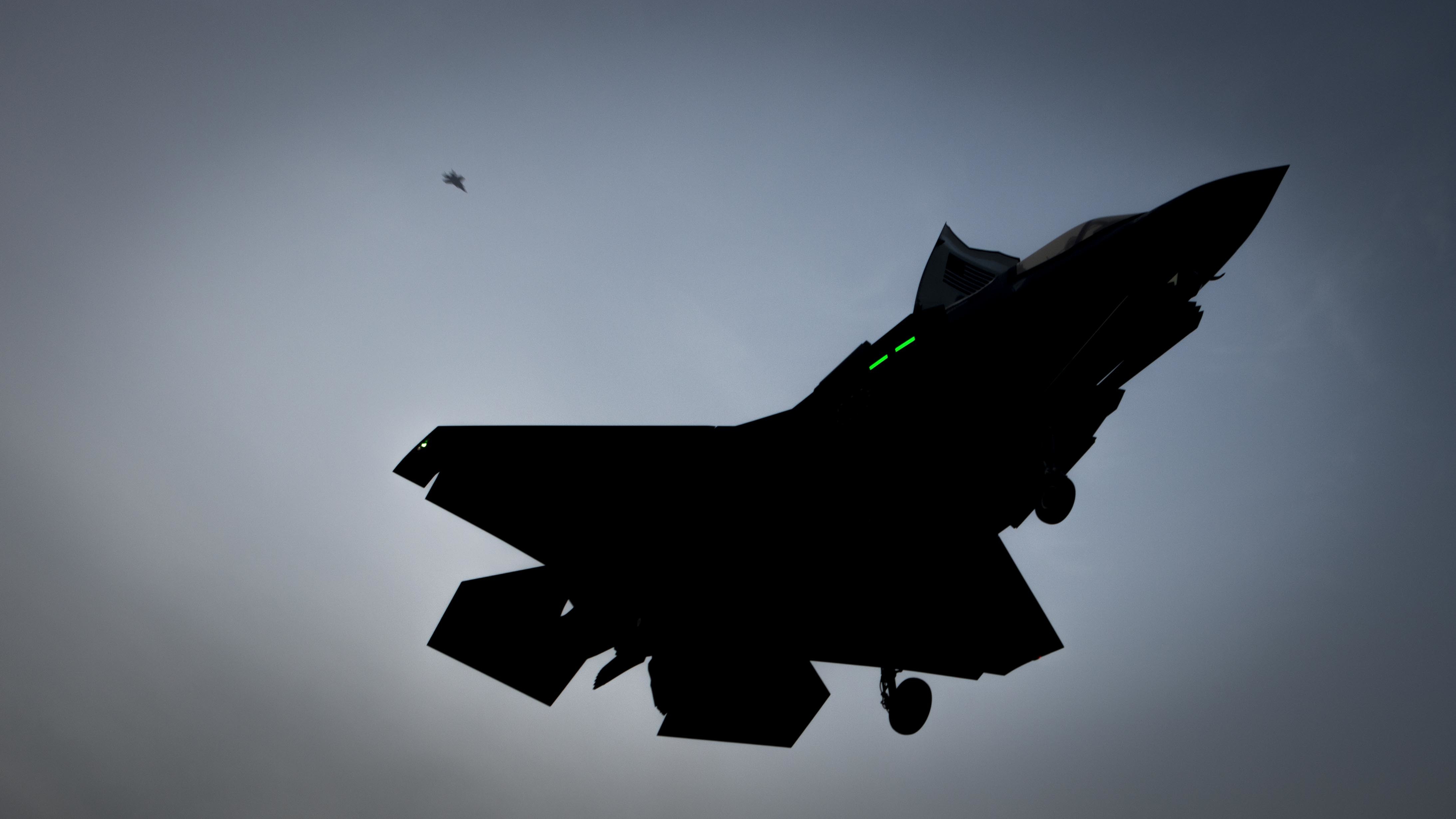
After eight months at sea with a squadron of F-35B Lighting II Joint Strike Fighters, the Marines and the Navy are seeing how the next-generation aircraft will expand the effectiveness of U.S. amphibious forces.
The Essex Amphibious Ready Group and 13th Marine Expeditionary Unit are nearly back to California after deploying in July to the Pacific and Middle East. The ARG/MEU’s return – with the embarked Wake Island Avengers of Marine Fighter Attack Squadron (VMFA) 211 – marks the end of the first combat deployment of the JSFs, 13th MEU commanding officer Col. Chandler Nelms told USNI News by phone Friday from USS Essex (LHD-2).
The Marine Corps is slowly replacing its aging fleet of AV-8B Harrier attack aircraft with the fifth-generation fighter that boasts suites of advanced avionics, navigation, communications and weapons systems that added a wide range of new capabilities to the Essex ARG.
“It’s got the short-takeoff capability of the Harrier, the speed and payload of a (F/A-18) Hornet, and it’s got the forcible entry options that stealth technologies give us,” Nelms said.
“Because of its air-to-air capability and its sensors for air-to-ground capabilities, it also provides a new dynamic for the ARG commander, for the commodore, while we’re out conducting blue-water operations or littoral operations or defending the ARG. … On its first deployment, it was kept very busy.”
“[It] increases battlespace awareness with data fusion and the ability to share information with the ships and the ships’ combat control system,” Capt. Gerald Olin, Amphibious Squadron 1 commander and Essex ARG/MEU commodore, told USNI News from Essex. “So it’s really an extension of our sensors, and it also brings to the table a greater increased lethality than what we had with previous generation aircraft.”
The ARG, composed of Essex, dock landing ship USS Rushmore (LSD-47) and amphibious transport dock USS Anchorage (LPD-23), deployed across three fleets in Asia and the Middle East. While deployed, the F-35 squadron conducted operations in Afghanistan, Iraq and Syria.
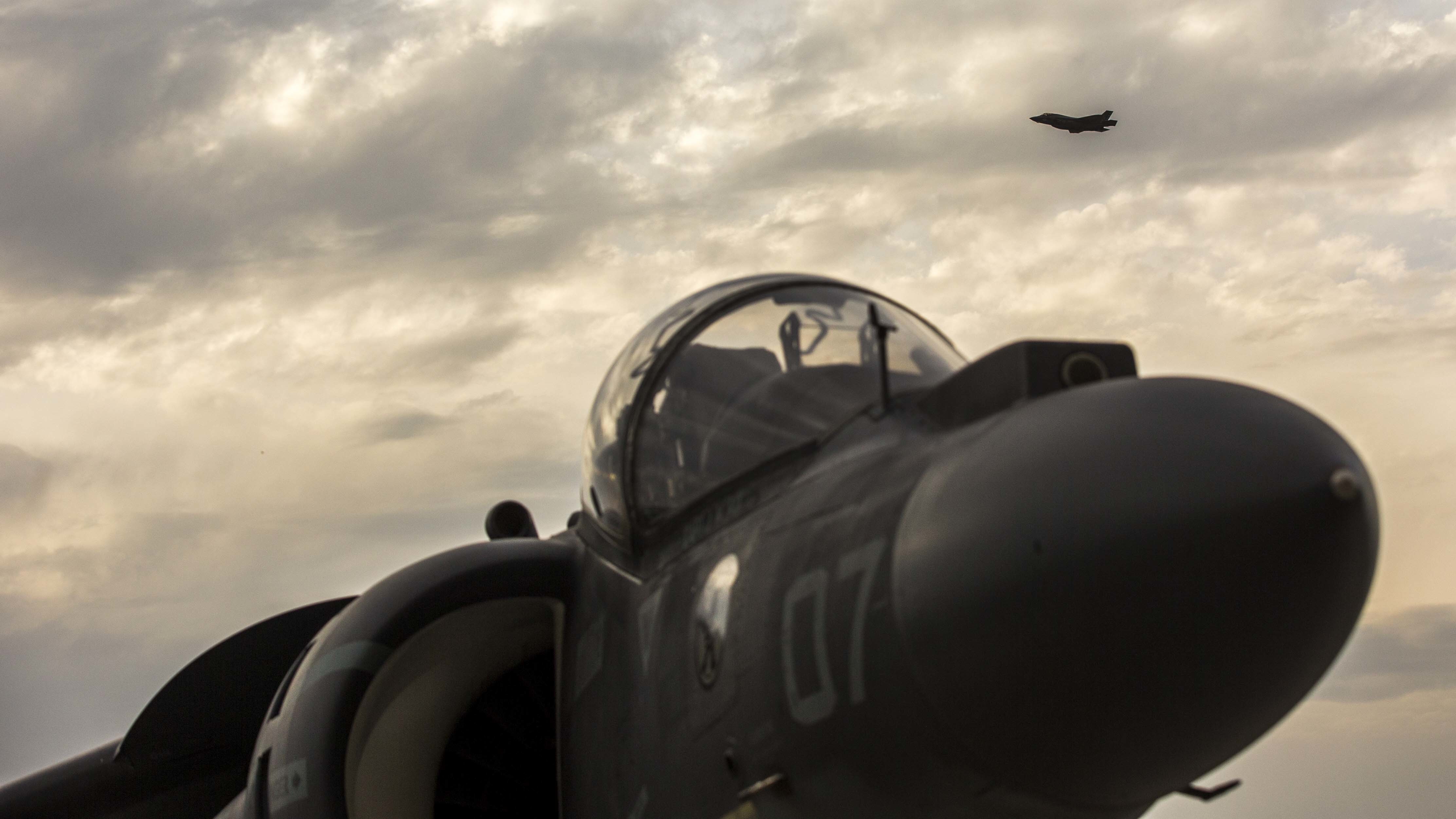
“The aircraft and its integration with the ship and integration with the mission exceed my expectations,” Lt. Col. Kyle Shoop, who commands VMFA-211, told USNI News. “Just in our time with 5th Fleet, we supported over 50 days of combat for over 1,200 flight hours … didn’t drop a single line of FRAG or combat support.”
At times, the jets flew off Essex for long missions, “and we kept employing ordnance in both theaters,” Shoop said, referring to Afghanistan for Operation Freedom Sentinel and Syria and Iraq for Operation Inherent Resolve.
“The jet itself proved to be very reliable. Throughout that whole time period, Marines did a great job keeping it serviceable,” he said. “We were gone away from the ship for an extreme amount of time – a lot of times over five, six hours away from the ship – and they’d turn them around that night to fly again the next day. So that went really well.”
The F-35B performed “like we expected,” Shoop added. “Some of the sensors onboard would do better than, say, a Harrier would through adverse weather or things like that. So it proved to be pretty versatile.”
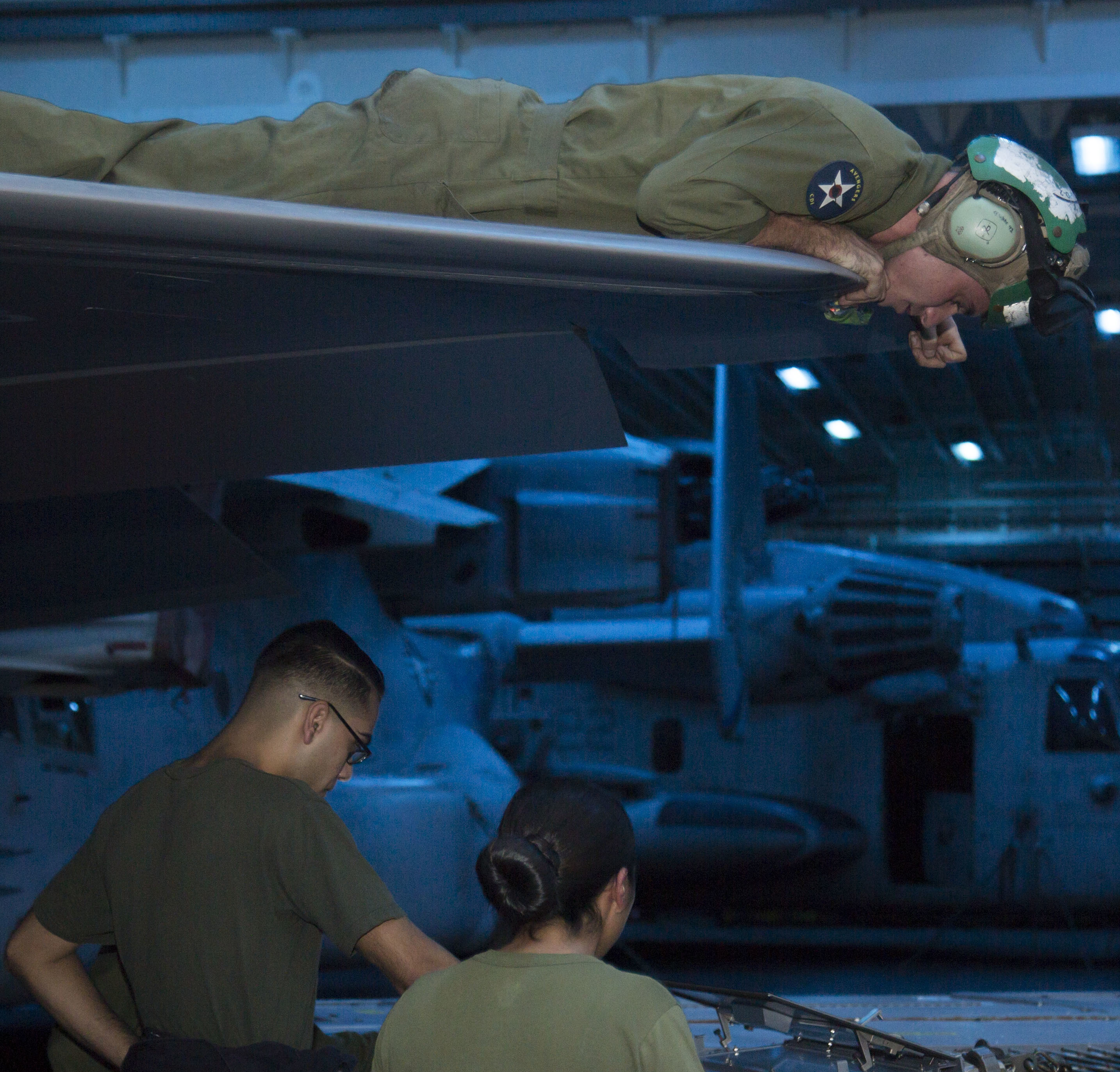
The F-35B crews operated from Essex for nearly all missions, except when the ship pulled into port for a mid-deployment repair.
“We did step off the ship during that time to keep employing the aircraft in theater, so we did a short period of time ashore,” Shoop said. “We were used for defensive counter-air in-theater, as well as sustaining alerts on the ship, able to launch with air-to-air weapons,” he added.
Shoop said squadron Marines were excited and appreciated the significance of the jet’s first operational combat deployment.
“They knew there were a lot of eyes outside of this ship that were on them and how they were performing,” he said. “So they were very aware of that and knew they needed to be extra diligent the whole time.”
The busy flight schedule and maintenance demands have provided more data and lessons about the F-35B.
“We learned some things along the way, especially with supportability of low-observable airplane aboard the ship,” Shoop said. “Obviously, there’s a lot of corrosion concerns aboard the ship. Saltwater is on it all the time, so for over eight months we got to learn a lot of lessons from that. In fact, Lockheed was out here just recently. We hosted them. They are very interested in coming to check out one of the airplanes as we come back ashore, to capture those lessons, maybe change some materials, et cetera.”
“We also got to sort out the logistics chain, test that thing and make sure it was up to speed. And it was. They answered the mail, they were very flexible,” he added. “We got to obviously see how well outfitted the Afloat Spares Package, or ASP, is aboard the ship, and it proved to cover down on most of the parts that were needed.”
The ASP was crafted based on computer models, but the eight months of real-world data “gives the supply chain a good snapshot of what they need to to do outfit to ensure LHDs with F-35s while aboard,” he said. Despite “some bumps along the way” they had readiness “up about 75 percent or greater the entire time.”
The addition of the F-35B also gave commanders an aircraft capable of helping defend the amphibious task force. Its onboard systems provided a data link so “we could communicate with and incorporate into our defensive posture,” said Olin, whose career includes operational deployments with carrier strike groups.
“That’s kind of the model I’m used to. We were able to emulate that, to some extent, here on the Essex ARG by using the F-35 for deck-launched interceptor support, defensive counter-air, anti-surface warfare type of missions. So that was a really great addition to the package here, above what we and I had experienced with the AV-8 Harrier on the last deployment.”
“I think we have already proven that the [F-35B] is reliable and that it integrates well on the amphibious shipping,” Nelms said. “So the next step now is just continue to develop the tactics, the techniques, the procedures of how we fight with that. We got a really good look at that on this deployment, and I think there’s a lot more to be explored in the future.”
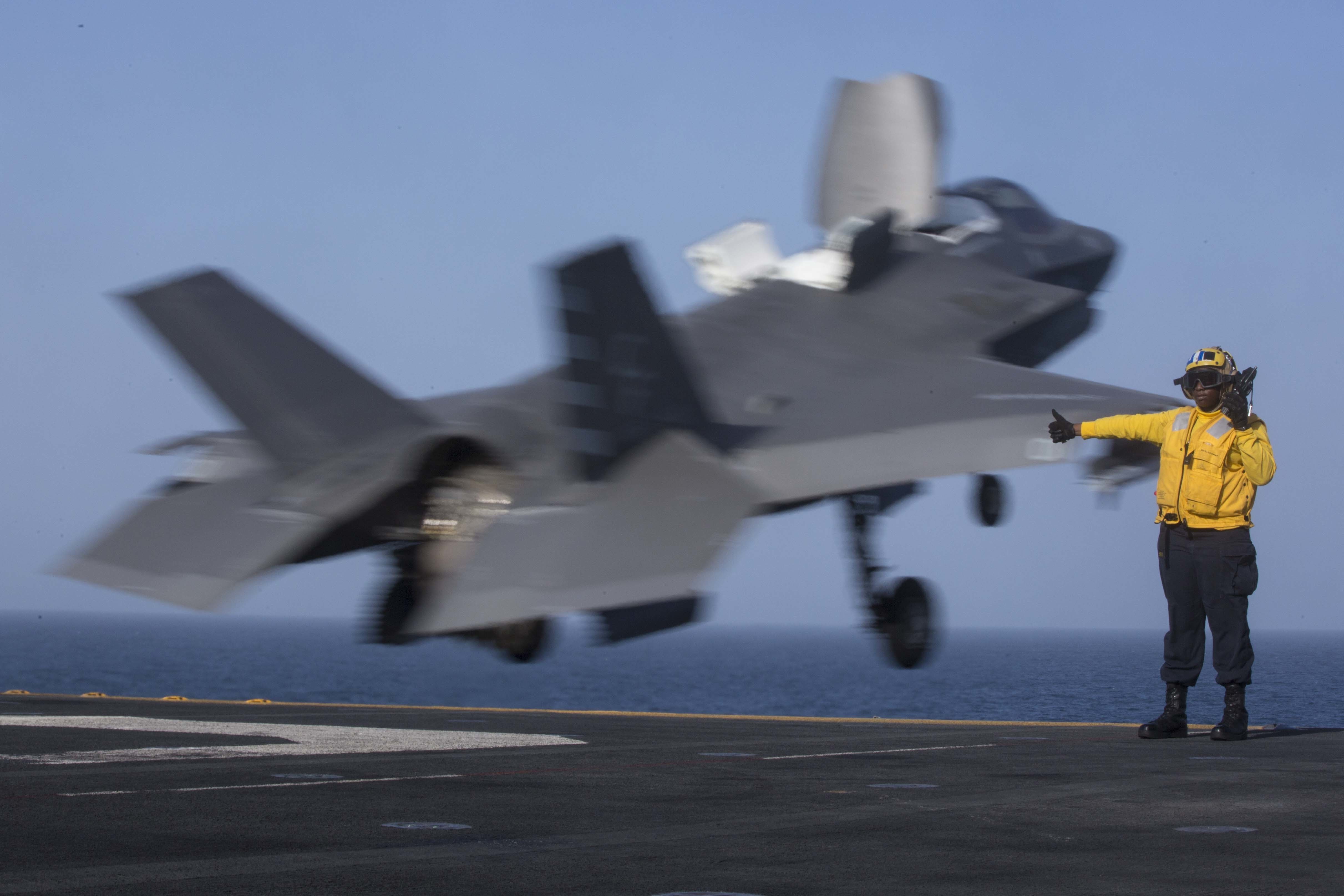
The ARG/MEU “stood the watch as a crisis-response force,” Nelms said. “We conducted exercises with our partners to help build our partnerships and we supported real-world operations. This has been an extremely dynamic deployment.” Among the international partners who trained with the Essex ARG/MEU was the Indian Navy, which practiced amphibious and air operations in theater security cooperation exercises.
“We have been on-call for crisis response for a number of things that we have watched develop over the deployment,” he said. “We have conducted over 16 different exercises throughout the deployment, and all the while conducting operations from the ship, to include aviation operations and F-35 operations in support of ongoing operations in 5th Fleet to include Inherent Resolve and Freedom Sentinel.”
Overall, Nelms said, 13th MEU sent some Marines and sailors ashore to support OIR missions. CH-53Es Super Stallion transport helicopters were sent into Iraq to support the OIR Joint Task Force, and platoons of Marines were sent to multiple locations as a response force.
The 13th MEU’s artillery battery went ashore to work with Special Purpose Marine Air-Ground Task Force (SPMAGTF) Crisis Response Central Command, he said, adding “that battery also deployed for a period with SPMAGTF in Syria as part of an operation.”
“We come into theater with a whole lot of capability and a lot of capacity behind that to do both ends of the spectrum, from low-end things to the high-end things, which is land the MEU. Sometimes there’s a little bit extra capacity that we can free up to help the combatant commander with specific problems, while reserving, preserving enough capability on the ARG for crisis response,” he said.
Marines aboard Anchorage were assigned to U.S. 6th Fleet to support operations in that region. They included a detachment that operates the RQ-21 Blackjack, a small Group 3 unmanned aerial vehicle making its first deployment with the 13th MEU. The RQ-21, which serves as an intelligence, surveillance and reconnaissance (ISR) platform, “proved to be a really good tool for us,” Olin said.
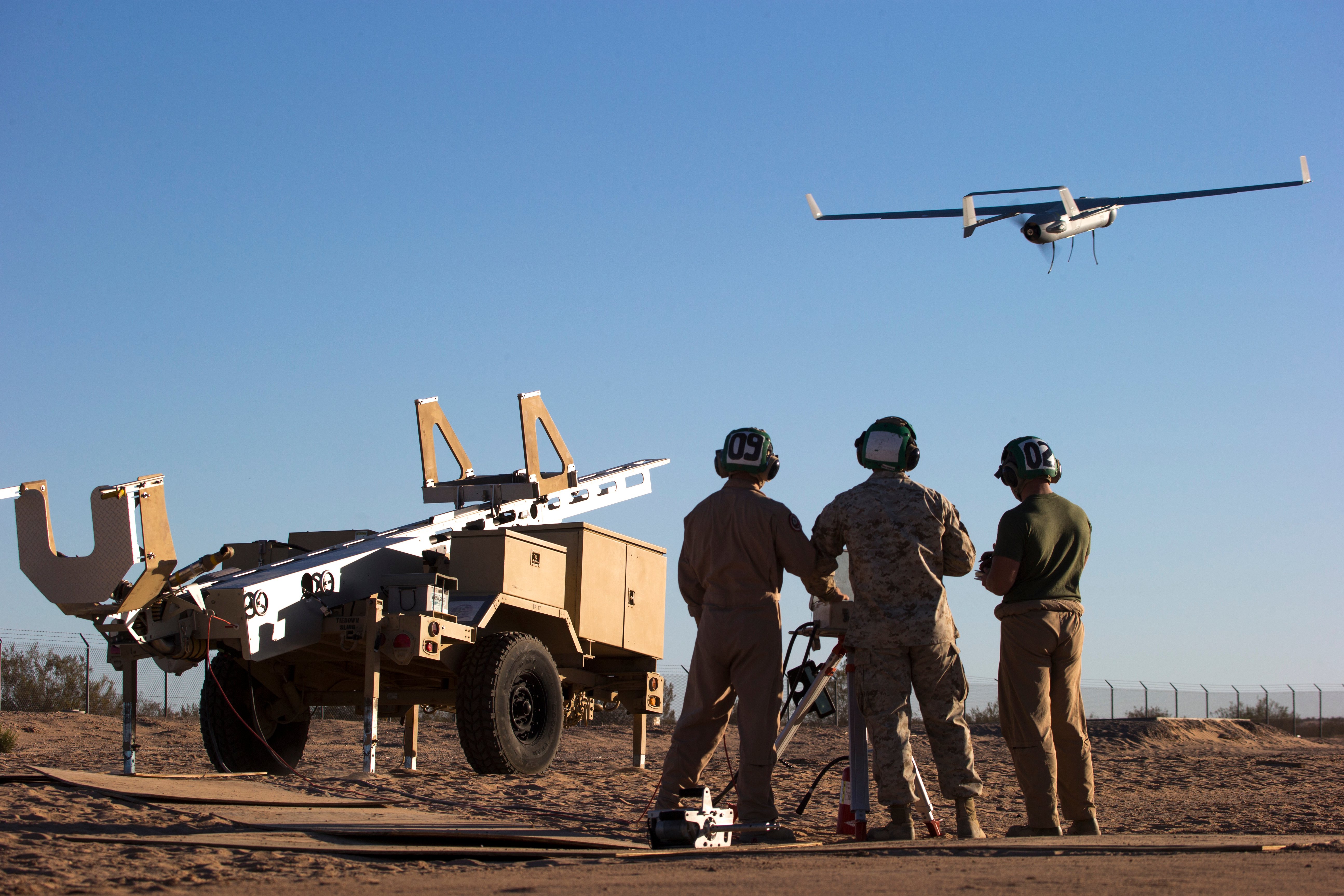
The RQ-21 helped support search-and-surveillance missions and helped build a maritime picture “so we were able to launch the aircraft, and it could go out and help us ID other surface contacts on a picture to build our situational awareness,” he said. “That’s a mission we would normally do in the Navy with an MH-60 helicopter. We don’t have a lot of those for that mission here in the ARG, so we were able to cover that gap with the RQ-21s off the USS Anchorage.”
“We try to complement each other any way we can,” Nelms added, “so when we’re doing blue-water operations or we’re working in the littorals and not operating ashore, I want to help the commodore in his fight protecting the ARG, and likewise the RQ-21 has a lot of capability once we take it ashore. It’s designed to be deployed ashore with the MAGTF, so once we’ve gone and taken some ground…. now it’s operating and supporting Marines in the operating area with its range and its sensors. It’s an extremely versatile aircraft.”
“This was a great deployment for us, a great experience especially with being a part of a new, revolutionary aircraft and figuring out how we’re going to use (the F-35B),” Olin said.
“There’s a lot of lessons that we learned and to be learned.”





